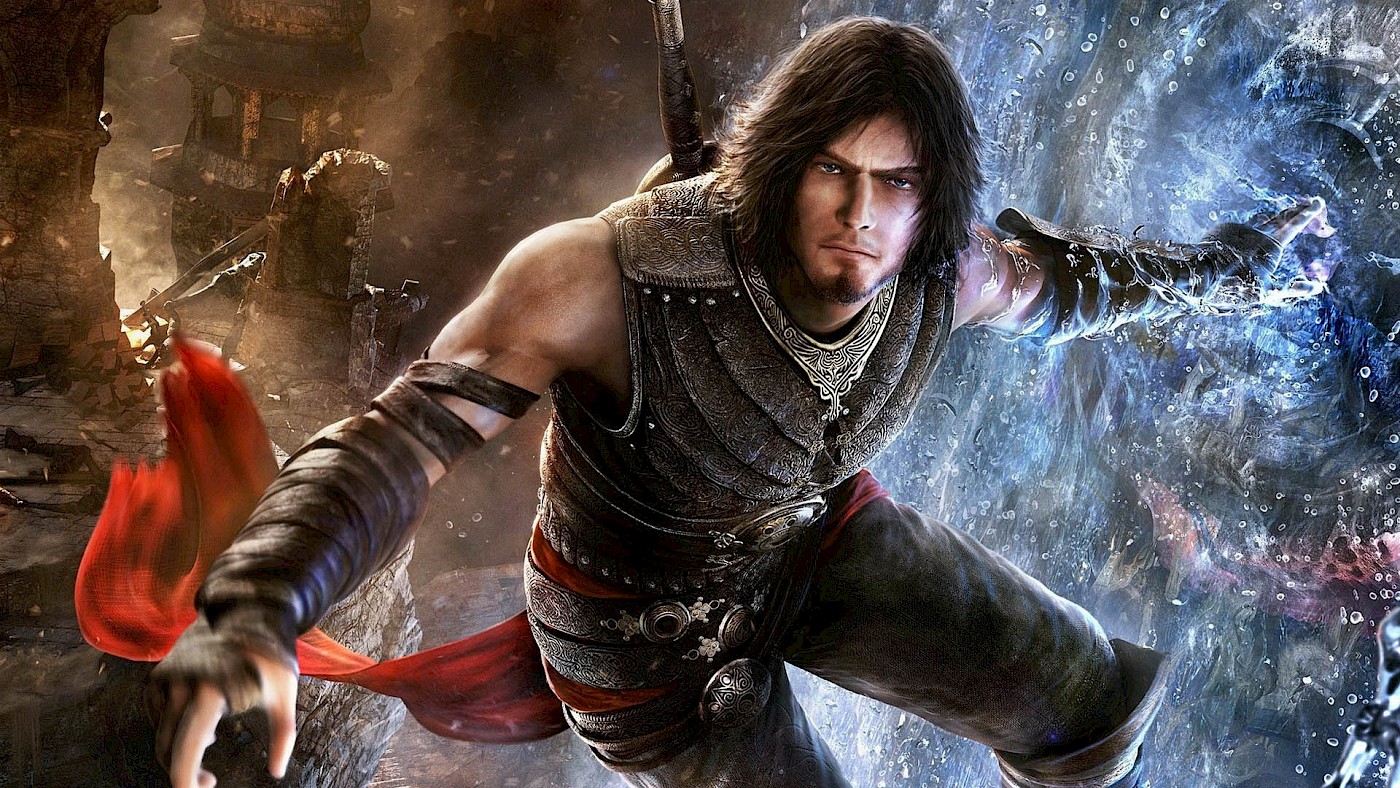Yesterday, I wrote at length about the Prince of Persia games, originally created by Jordan Mechner. In particular, I focused on the Sands of Time trilogy, which features an unnamed Persian Prince who tries to undo his mistakes and change fate.
The first instalment in that series was set in the ninth century AD, but took heavy inspiration from the Persian epic Shahnameh as well as the tales of the Arabian Nights. The followup, Warrior Within, was more bloody and loud, and set entirely in a fantasy world, the “Island of Time”. The third instalment, The Two Thrones, seemed to take a step back in time and introduced elements from the ancient world: Roman-style arenas, Scythians, and even chariots.
These three games were released one after the other in 2003, 2004, and 2005. After a short brak, a new game in the series was released in 2008 entitled simply Prince of Persia. This entry was designed to be the start of a brand new series of games, outside of the Sands of Time continuity. While the game was well received critically, it didn’t do well commercially, which is why Ubisoft returned to the Sands of Time series once more in 2010 with The Forgotten Sands.
Zoroastrian acrobatics
2008’s Prince of Persia, also referred to unofficially as Prince of Persia Zero, starts with the Prince (if he is indeed royalty?) wandering the desert in search of his donkey, named Farah as a tongue-in-cheek reference to the Prince’s companion character in The Sands of Time. We later find out that the Prince has been robbing tombs and that his donkey ran off during a sandstorm, taking all of the treasure it was carrying with it.
While looking for the animal, the protagonist runs into a princess called Elika, who’s fleeing some guards. The Prince follows her, in a false sense of wanting to rescue the damsel in distress, only to find out that there’s more to her than at first appeared. A meeting with her father at a temple takes a turn for the worse when the king cuts down a tree that kept Ahriman, the embodiment of all that is evil, safely locked away. Ahriman escapes and darkness descends on the world.
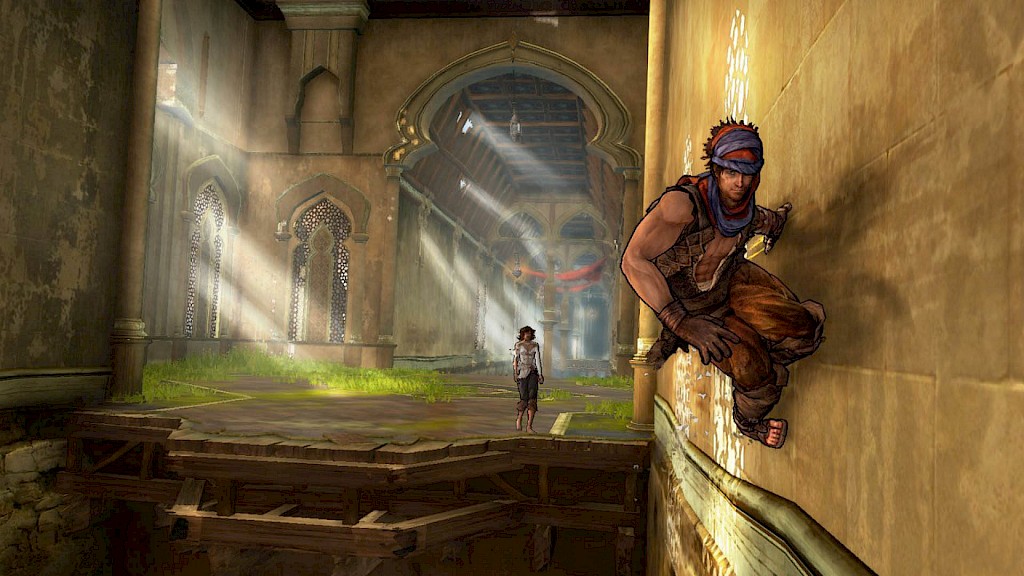
The Prince and Elika team up in an effort to combat Ahriman. Elika explains that they have to venture into the ruins of the nearby city to fight each of Ahriman’s four lieutenants in order to heal the “Fertile Grounds”. Just which area of the city you investigate first is up to you: the game’s fairly open in that regard.
You’ll head into an area, fight and defeat the boss of that area, after which Elika restores the Fertile Grounds. When she does so, the bleak environment turns green and pleasant, and a large number of “light seeds” spawn. These light seeds are used to unlock abilities at the temple that give access to new areas of the map, and the cycle continues in this way until you beat the game.
Prince of Persia features the fantastically large and intricate architecture that we’ve come to expect from the Sands of Time games. There are cuneiform inscriptions on some walls and the game borrows heavily from Zoroastrianism, giving the impression it’s set at some point in the (later) ancient world, perhaps around the time of the Sassanids? Ahriman is the Zoroastrian embodiment of evil, opposed by Ahuramazda (who’s also known as Ormazd, the name used in the game). Elika herself belongs to a people known as the “Ahura” (a reference to Ahuramazda), most of whom left long ago.
The temple is located at the base of a gigantic tree, and in order to free Ahriman, Elika’s father cut down a smaller tree inside the temple’s inner sanctum. In the art and myth of the ancient Near East, the “Tree of Life” is a well-known motif, and something that the developers clearly drew a lot of inspiration from. But they also didn’t completely ignore the series’ origins. For example, some of the architecture still features islamic traits and there’s a reference to the Arabian Nights in the game’s achievements: one of them is unlocked when you collect 1001 light seeds.
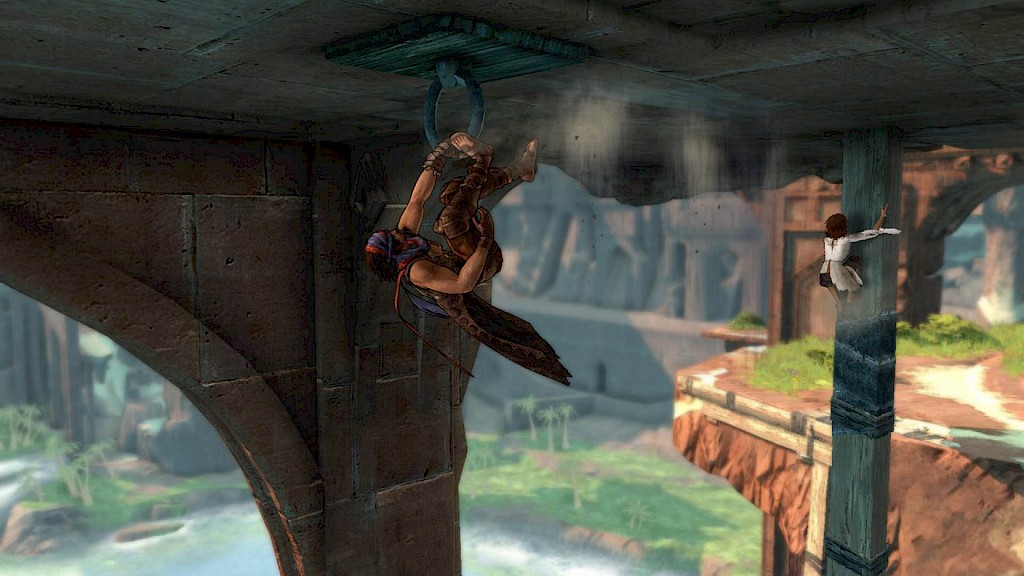
The rebooted Prince of Persia is an excellent game. It severly scales down the combat from the previous games. Instead of fighting small groups of enemies, you’ll never fight more than one enemy at the time, either random warriors or the bosses. This makes every engagement feel consequential; essentially every fight plays out like a boss battle.
As a result, combat is more similar to what you might encounter in a fighting game, with the Prince and the enemy in question moving along a single axis. You can step to the side, move forwards or backwards, perform an acrobatic move, use the special glove that the Prince wears, strike with your sword, or use a magical attack via Elika. You can also block attacks, and if you time the block correctly, you’ll parry an enemy blow and can immediately counter-attack. If you get hit too often, a special quick time event plays where you have to press the button shown on screen: if you miss, you’ll be able to continue, but your enemy’s health regenerates a bit as a result of your failure. As a result, you’ll never “die”, making the experience seamless.
The enemies and bosses themselves are creatures seemingly composed of darkness. They reminded me of the Dahaka from Warrior Within. At various times, enemies will shift in appearance and a number of tentacles will erupt from them in the same manner as the Dahaka. The darkness of Ahriman is also evident in pools of black goo that languidly reach toward the Prince when close. The spinning saw traps of earlier games have been replaced by black globs moving back and forth along sections of wall.
Aside from combat, the platforming has also been streamlined. The special action action button from the previous games has been removed: to wall run or perform other special moves, you only need to tap the jump button. There’s no more puzzle platforming as such: it’s always clear where you have to go and should you get lost anyway, simply tap the appropriate button (Y on the XBox controller) to have Elika point the way. You’re unlikely to get lost.
That may seem like the game’s too easy, but the challenge in 2008’s Prince of Persia is in swiftly moving through the environment, with the game at times feeling more like a rhythm game than anything else: you’ll have to tap the correct buttons at the right time to prevent from falling. It feels satisfying, even when it’s quite different from the previous games with their more deliberate movement. It’s the perfect game to simply play through at a relaxed rate and enjoy the visual spectacle of seeing your digital avatar run, jump, and climb through the different areas of this world.
In previous games, you could rewind time if you happened to fall to your death. In this game, your constant companion Elika will rescue you if you happen to miss a jump. She’ll return you to the last safe platform you were on before you fell. This doesn’t mean you’ll never fail: it simply means that you’ll never have to sit through a game over screen and wait for the game to reload. It’s an elegant system that removes nothing of the challenge of getting through a particularly difficult gauntlet of obstacles.
A dive back into the past
The reimagined Prince of Persia from 2008 was not a commercial success. But with the release of the Disney movie adaptation of The Sands of Time in 2010, Ubisoft felt it was a good idea to release another game in the Sands series, making it a trilogy plus one. The result is The Forgotten Sands, set shortly after the events of 2003’s The Sands of Time and before the Prince got chased by the Dahaka.
In this instalment, the Prince visits his brother Malik, who is the ruler of a city somewhere in Persia. Malik’s city is under attack and about to lose. In an act of desperation, Malik uses an amulet to release a force that was originally sealed away in the time of King Solomon (tenth century BC). Magic spreads through the city, turning mortals into sand sculptures, while a variety of vaguely zombie-like sand creatures pop up out of the ground. Malik and the Prince are prevented from turning into sand sculptures themselves because they each wear a half of the amulet that Malik used to release the sand army.
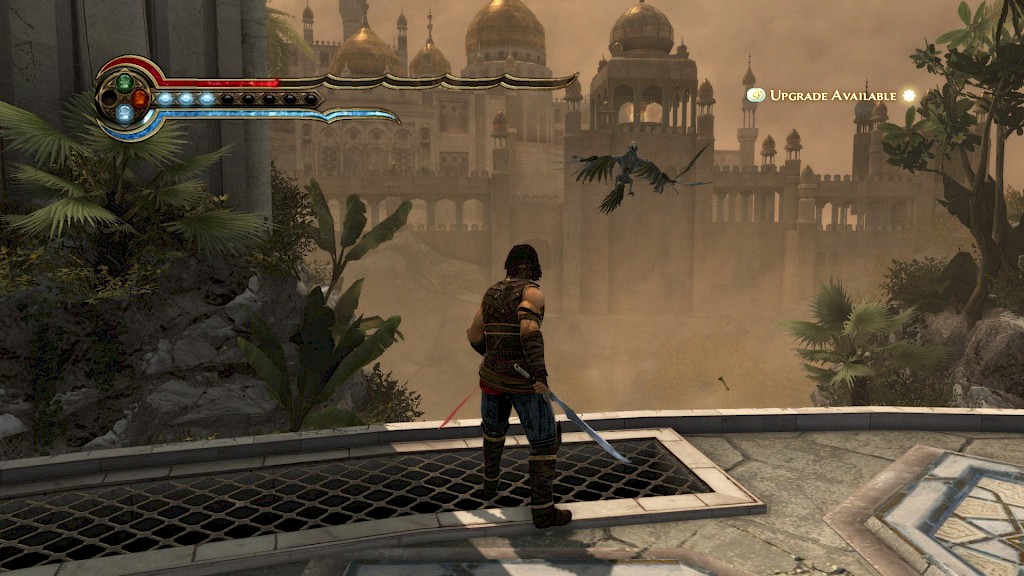
The basic story sticks close to The Sands of Time (which itself was again echoed in The Two Thrones). As in the first and third games, the Prince arrives during the siege of a city and soon afterwards an army is unleashed composed of sand creatures. The controls have been tweaked for this entry, with jump and roll now being mapped to two separate buttons: it’s a small change, but I appreciate the greater level of control this afforded me.
The fighting system has again been completely overhauled. The fighting system from Warrior Within and The Two Thrones has been chucked out completely. The Prince now fights mobs of enemies instead of single foes or small groups of three or four. He has also been given the ability to kick enemies, which is useful when fighting enemies with shields. Curiously, the designers removed his ability to block attacks; you now have to dodge them or jump out of the way.
The fighting at first glance doesn’t offer as much variety as in previous Sands of Time games, but it’s quick and generally unobtrusive: those aspects alone mean that the new system is by and large an improvement, although I also really like the slick, one-on-one combat system in 2008’s Prince of Persia. In The Forgotten Sands, you can do simple combos by tapping the attack button, or do a “power attack” by holding that button. Kicking enemies off ledges is good fun, but I miss the ability to block attacks. However, being able to quickly cancel attacks by dodging or kicking is greatly appreciated.
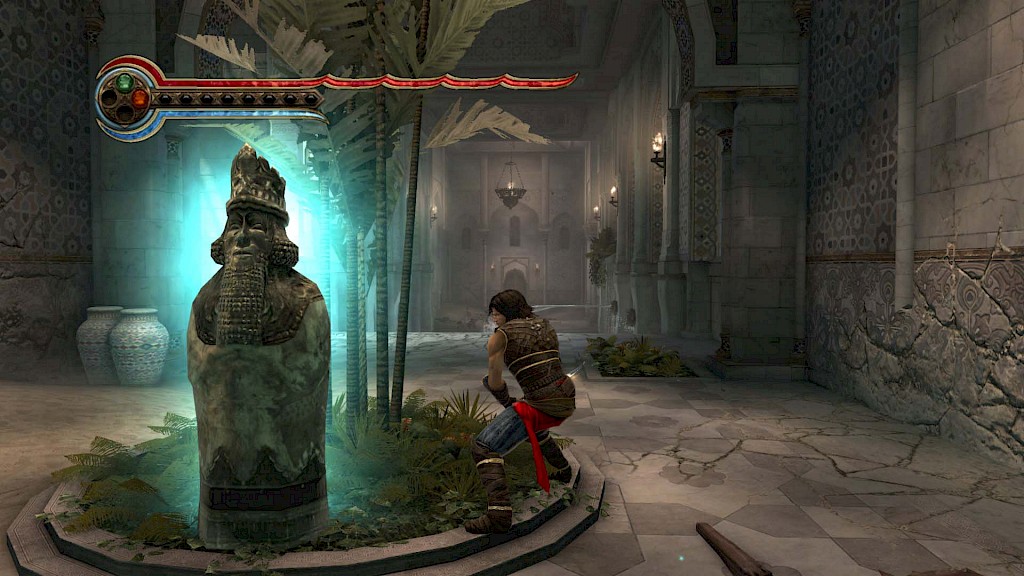
Overall, this instalment is an extremely entertaining and well-made game. Traversal is polished and fun, with tight controls. Some interesting mechanics are added, too. You can still rewind time, but you also acquire the ability to freeze water, so that you can wall run along waterfalls and grab hold of water columns and the like. As far as running, jumping, and climbing are concerned, this game is perhaps the pinnacle of the series. The puzzles in the game, while simple, are also interesting and just challenging enough to keep your interest, without being frustrating.
As far as architecture and setting is concerned, The Forgotten Sands is probably set around the same time as the first game in the series, so in the ninth century AD, though the buildings are obviously still larger and more intricate than anything that existed back then.
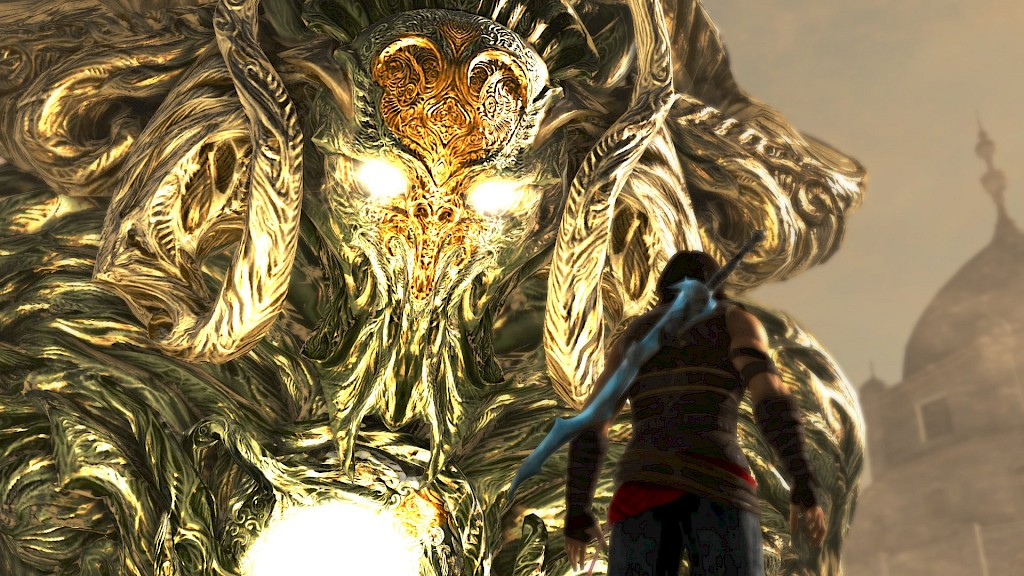
Your guide in this game is a djinn called Razia. More specifically, she’s a member of the Marid, in folklore a kind of evil spirit, but in the game she is a force for good, who once helped King Solomon to lock away the sand army. Your main enemy, Ratash, is an Ifrit, another type of djinn, who is given a fiery, almost demonic appearance in the game. Djinns are drawn from Arabic folklore.
When you visit Rekesh, the ancient city of the Marid located beneath Malik’s palace, you’ll run into inscriptions written in cuneiform, which was abandoned in the first century of our era and about six hundred years or so before the islamization of Iran. This fits the story, since Razia explains how the Marid worked with King Solomon to lock away the Sand army at some point in the (distant) past. At one point, Razia even seems startled at the amount of time that has passed.
There are a handful of other references to the ancient world. For example, one of the statues in Rekesh that represents another member of the Marid is also clearly modelled after a famous Hellenistic statue of Artemis of Ephesus. As you make your way through Malik’s city, you’ll also run across an area with gardens, similar to the fabled Hanging Gardens of Babylon.
Closing thoughts
In his notes to the 2008 graphic novel, Mechner relates a story about seeing the a PlayStation 2 copy of Prince of Persia: The Sands of Time “in a glass display case alongside a 1903 edition of The Arabian Nights, a pack of Camel cigarettes, and a Las Vegas hotel ashtray with a picture of a harem girl. The title of the exhibition was ‘Seducing America: Selling the Middle Eastern Mystique’.”
Mechner talked briefly with the curator, who wanted to know if he could get his hands on the box of the original 1989 Prince of Persia. But he didn’t engage with him much about why the original Sands of Time had been included in the exhibition. The Prince of Persia games, having sprung from the mind of an American creator, and published by first an American and then, from 2003 onwards, a French company, are good examples of “Orientalism”: Western imitations or depictions of (aspects of) cultures from the East (i.e. the Orient).
The critical work in this context is Edward Said’s Orientalism (1978). Said defined the term as the often patronizing way in which the West depicts what it conceives of as “The East”. Like notions involving the “Noble Savage”, which idealized people living in more “primitive” conditions, views of the East were often romanticized, with different cultures lumped together and stereotyped to forge a generic image of what “The East” represented to Westerners. For Said, this treatment of the East was part and parcel of imperialist (colonial) thinking in the West.
The Prince of Persia games can be regarded as modern examples of Orientalist fiction, and no doubt for this reason the exhibition that Mechner visited included a copy of The Sands of Time. The games certainly give an expression of what Westeners might regard as “Oriental mystique”. The games also seem to tick a lot of Said’s boxes: they feature warfare (besieged cities feature in three of the five games that I’ve discussed!), domed buildings, vaults filled with treasure, delicate fabrics, an adventurous Prince, baths, at least one reference to a harem, a healthy dose of magic, alluring Eastern princesses, an evil Vizier, and so on.
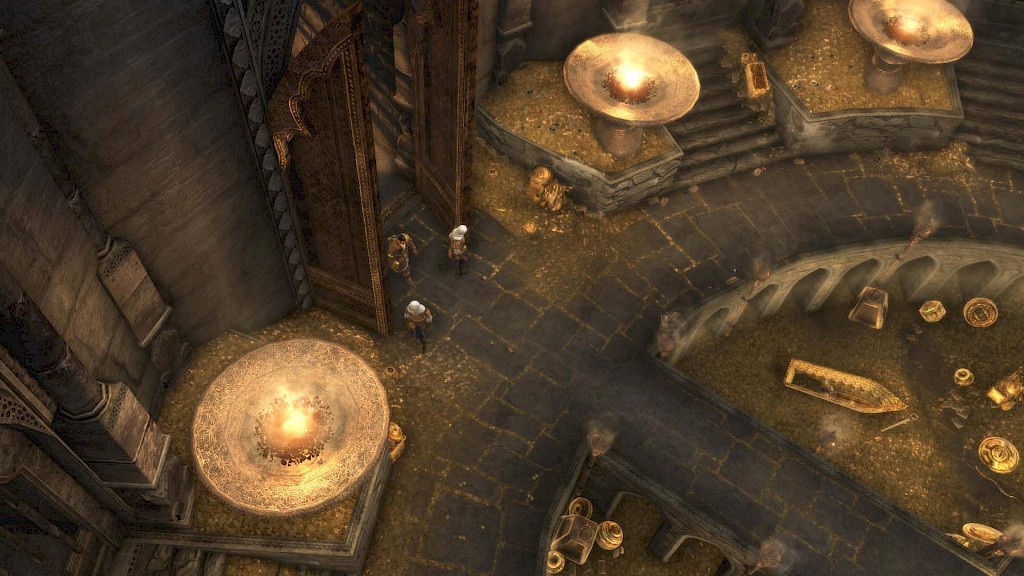
But while the games appear to be Orientalistist fantasies, they are saved by the fact that they are ultimately about characters and themes, rather than the trappings. The Prince undergoes significant character development over the course of the series as a whole, and to a lesser or greater extent also in individual games (including 2008’s reboot). For example, Farah starts out seemingly as a damsel in distress in The Sands of Time, but turns out not to be. The Prince pays a costly price for his youthful arrogance, leading to his father’s demise in The Two Thrones. And so on.
Dismissing the games as mere Orientalist fantasy does them a disservice. They deal with important themes irrespective of their setting, such as learning to live with the consequences of your actions, and whether or not there’s such a thing as fate. Furthermore, it’s significant, in a post 9/11 world, that we have a major series of games here that feature a likeable hero from the Near East. He’s certainly not perfect: like any regular human being, he makes mistakes. But that’s part of what makes him an interesting protagonist. Sometimes, I guess, a cigar is just a cigar.
In any event, all five of the Prince of Persia games released from 2003 onwards are among my absolute favourite games to play. If you’ve never played a game in the series before, I’d recommend starting with either 2008’s Prince of Persia or 2010’s The Forgotten Sands. If you don’t mind slightly stiffer controls and relatively dull combat, nothing beats the story and characters from 2003’s Sands of Time.
Incidentally, all of the games are available on GOG.com, save The Forgotten Sands: you can buy that on the Ubisoft store.
